
How to properly replace the CV joint in the car
Content
During the operation of the car, all moving and rubber parts eventually fail. This is due to the fact that each part has its own resource, and the conditions and operating environment make their own adjustments.
CV joint - constant velocity joint, is a hinged element for transmitting torque from the transmission to the wheel. Provides torque transmission at angles of rotation up to 70°. The car uses an internal CV joint (connected to a gearbox or axle gearbox) and an external one (from the side of the wheel). The people call the SHRUS a “grenade” for a similar shape.
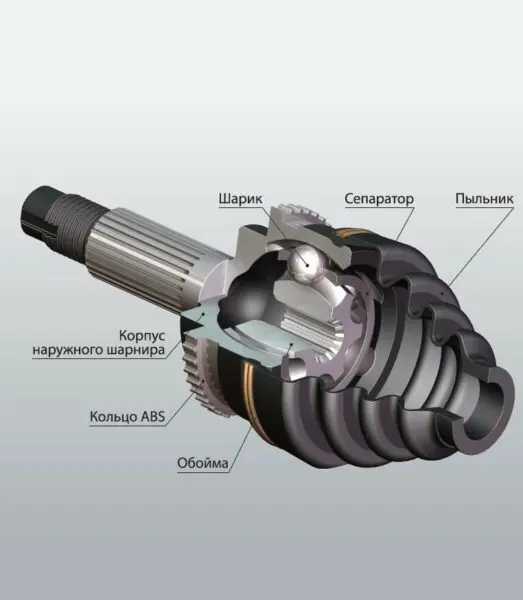
Methods for checking the inner CV joint
The internal CV joint fails much less frequently than the external one, but its diagnosis is somewhat more complicated. The reliability of the inner hinge is due to its low mobility and design feature - tripoid bearing.
Immediately before diagnostics, we will determine the reasons for the malfunction of the internal constant velocity joint.
Causes of malfunctions:
- inadequate quality of the articulated product, as well as the plastic or rubber boot, lack of lubrication inside;
- ingress of dust, dirt, water into the inside of the CV joint, as a result, washing out the grease, and the work of the hinge "dry" will soon lead to its breakdown;
- active off-road vehicle operation, aggressive driving with frequent slippage, leading to twisting of the drive and malfunctioning of the outer CV joint in particular;
- untimely renewal of the grease and anther, as well as the exceeded service life of the part.
How to check the internal CV joint for serviceability yourself:
- during acceleration, a slight vibration is felt - this often indicates wear on the glasses of the tripods, as a rule, the gap between the hinge and the glasses increases and during sharp acceleration you feel abundant and fine vibration, while the car should not lead to the side;
- characteristic clicks when driving on bumpy terrain - when the wheel falls into the pit in such a way that the wheel goes down relative to the body, an optimal angle for determining the malfunction of the internal CV joint is created.
It is better to carry out more detailed diagnostics on a lift, where you will have access to the left and right axle shaft, to assess the external condition of the CV joints and drives. By rotating the wheel to the side, as well as twitching the drive up and down by hand, the technician will determine the degree of wear of the hinges.
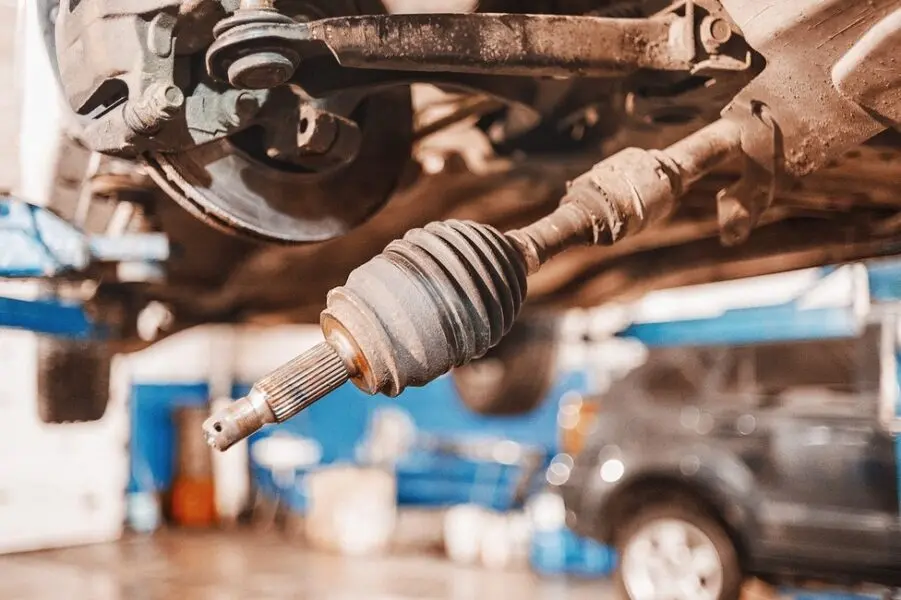
Repair or replacement?
After a detailed diagnosis of the drives, a verdict is issued - is it enough to service the CV joint, or is replacement required. The CV joint device does not allow for its repair, since the hinge elements, during operation, are erased, the gap between them increases, and the inner walls of the “grenade” are also damaged. By the way, any restoring lubricants (metal-plating with anti-seize additives) help only in the case of a serviceable CV joint in extending its life.
As for the torn anthers. If during the diagnosis anther tears are revealed, while the hinges are absolutely serviceable, it makes sense to replace the anther with clamps, first wash the insides of the “grenade”, and fill with lubricants. Remember - the CV joint cannot be repaired, it can only be serviced or completely replaced.
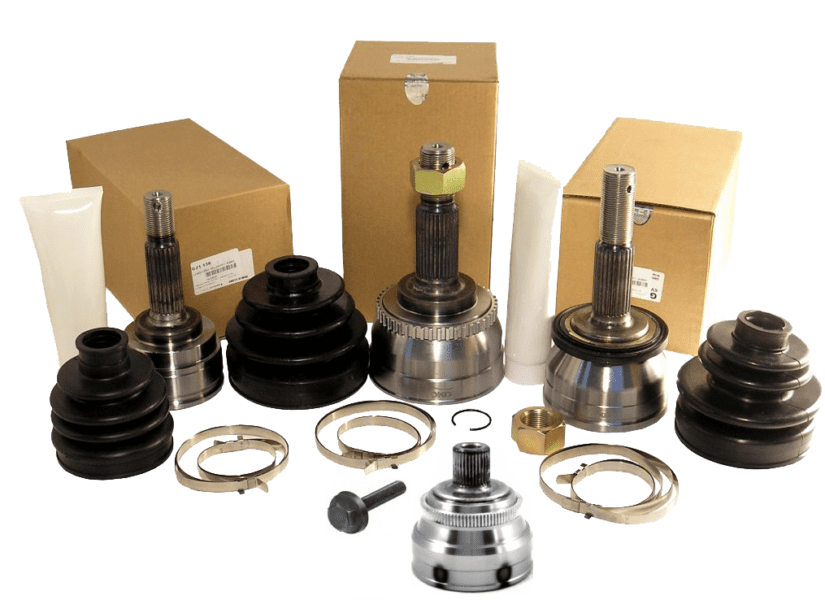
How much does a new boot cost and which one to choose?
The auto parts market is rich in the number of manufacturers, so the price range starts, conventionally, from $ 1 and can end with infinite numbers. You can select the boot using the auto parts selection program, find the corresponding part with the catalog number, and find the boot by this number. Most likely, you will be offered a range of manufacturers, from the cheapest to high quality original items. Remember that an individual spare part is provided for each car, although when choosing a CV joint boot, there are often interchangeability between different brands, for example Renault Traffic and Volkswagen Sharan. If the market does not offer options for anthers for your car, you can use the information on the Internet for selection, or purchase universal anthers, for example, from Jikiu CD00001. When choosing an anther, it is important to choose a grease of the LM 47 type (70-100 grams are needed for one CV joint) and high-quality clamps for reliable fixation of the boot.
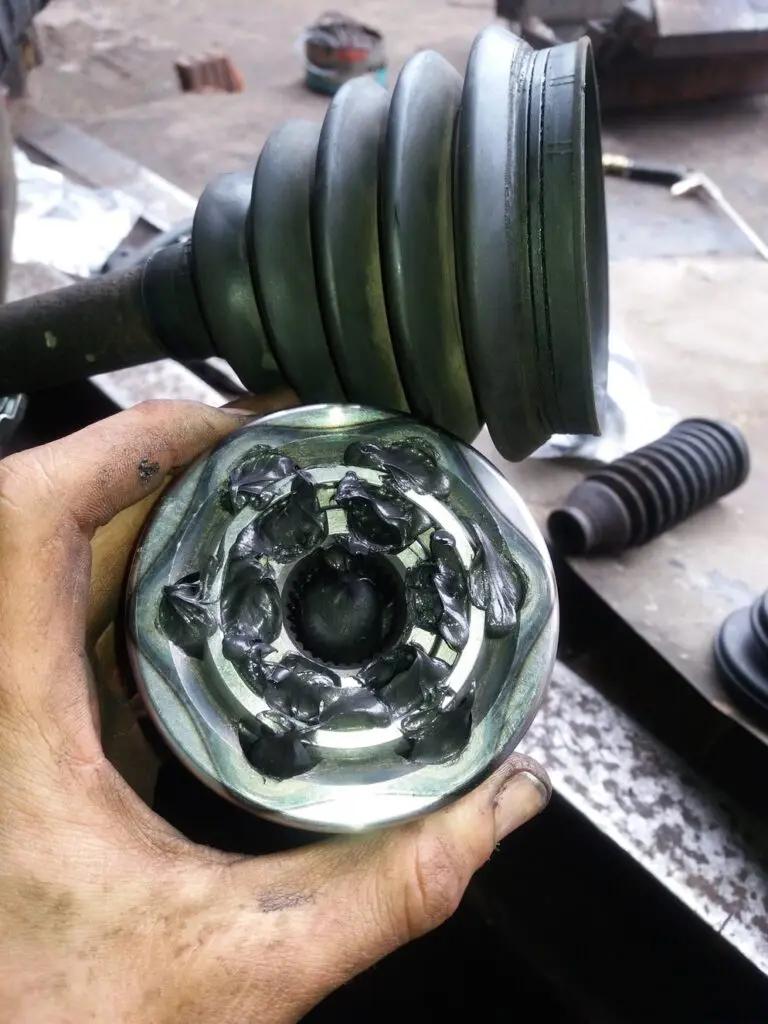
Replacing the external boot of the CV joint on cars
To replace the boot of the outer CV joint, it is necessary to drive the car onto a pit, overpass or lift, so that the process is as comfortable and convenient as possible. To perform such an operation, you will need:
- a minimum set of sockets with a ratchet wrench;
- screwdriver and drift;
- pliers;
- a hammer.
Step-by-step instructions for replacing the boot:
- drive the car onto an overpass or pit, turn on the speed and put on the hand brake;
- before installing the jack, it is necessary to rip off the hub nut and wheel bolts, but do not unscrew them;
- raise the required side and remove the wheel;
- if you change the CV joint on a front-wheel drive car, it is necessary to disconnect the steering tip from the steering knuckle, since in the future we will have to turn and retract the rack to a wide angle for dismantling and installation work;
- then it is necessary to dismantle the caliper together with the bracket, for this with a long screwdriver, resting on the block, press the piston, then unscrew the two bolts securing the bracket to the trunnion and move the caliper to the side, make sure that the caliper does not hang on the hose, otherwise this will lead to it early wear;
- now it is necessary to disconnect the ball joint from the lever, it is usually fastened with 2-3 bolts;
- we unscrew the hub nut and pull the shock absorber strut towards ourselves, turning the inner side forward (in the direction of the car's movement), remove the axle shaft from the hub;
- with a punch or flat screwdriver, you need to remove the old boot, then, by lightly tapping the hammer on the CV joint, remove it from the axle shaft, respectively, remove the old boot;
- the removed CV joint must be thoroughly washed from wear and tear products. To do this, you can use "diesel fuel" and a spray of the "Carburetor cleaner" type to remove the old grease from all cavities as much as possible;
- pre-brush the working surface of the axle shaft and the spline part of the hub;
- we fill a clean "grenade" with grease, first of all we install the boot on the axle shaft, after the CV joint;
- with new clamps we securely fix the boot, thereby eliminating the ingress of unwanted dirt and water into the “grenade”;
- then the assembly operation is performed in the reverse order.
Use WD-40 sprays for ease of work, and apply copper grease to the outer splines of the axle shaft and the spline in the hub to prevent and spread corrosion.
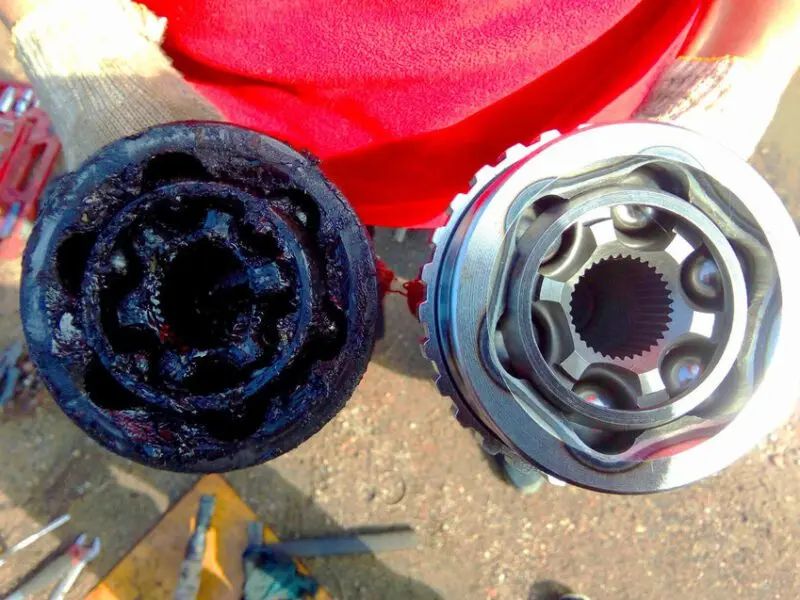
How to properly replace a grenade
To replace the outer CV joint, you must follow the above instructions for replacing the boot. The only difference is that the set with the new "grenade" has a boot, clamps and grease.
If it is necessary to replace the inner CV joint, then we carry out a similar operation, but without removing the outer hinge. After disconnecting the axle shaft from the hub, it must be removed, and depending on the design of the machine, this is done in two ways:
- by pulling out (the slots of the inner grenade are fixed with a retaining ring);
- unscrewing 10 bolts of the inner CV joint mounting flange from the gearbox.
If your axle shaft is dismantled by pulling it out, then substitute a container of oil under the gearbox in advance, since it will immediately flow from the hole under the axle shaft.
To replace the inner CV joint, you need to remove the boot and find the retaining ring that fixes the tripod to the axle shaft.
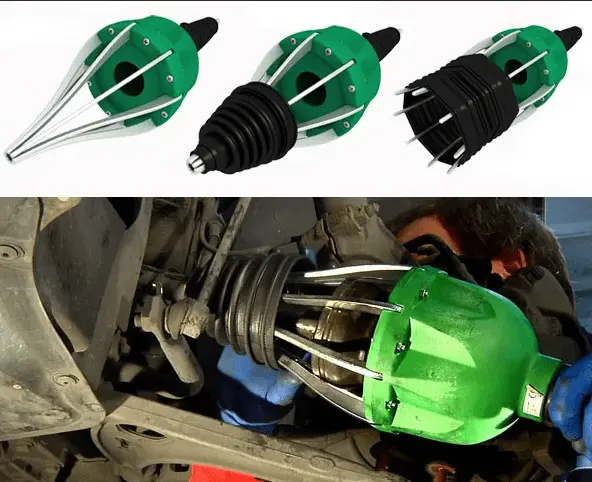
How to do without removing the drive from the machine
In extreme cases, there is an urgent need to replace grenade anthers. Fortunately, for this they came up with a pneumatic CV joint anther remover, the design of which is based on the presence of tentacles that push the anther to a size that allows it to be pushed through a grenade. The average cost of such a device is $ 130.
The method without dismantling the drive has its drawbacks:
- it is impossible to thoroughly wash out the old grease and fill with a new one;
- there is no way to assess the condition of the spline part of the semiaxis;
- not every car service considers it necessary to have this device.
What to do if the boot breaks on the road?
If you notice that the CV joint boot has torn on the way, and the nearest car service is still far away, you can try to save it in simple ways.
I strongly recommend that you always have a few plastic ties and straps with you. To protect the CV joint, before the first service, it can be carefully wrapped with ordinary polyethylene in several layers, then securely fix it with ties. The speed, in this case, should not exceed 50 km / h. If the weather is dry and you are driving on asphalt, then you can get to the nearest service without exceeding the above speed.
To avoid such situations, follow two rules:
- diagnose your car in a timely manner;
- buy only high-quality spare parts and components.
Questions and answers:
What is the resource of the CV joint? This mechanism has a large working resource. It all depends on the operating conditions (on what roads and at what speed the car drives). The CV joint can fail on a run of more than 100 thousand.
Where are the CV joints? For each drive wheel, two CV joints are installed. The outer grenade is installed on the wheel hub, and the inner grenade is installed on the exit from the gearbox.